
Why Is Black & White Photography So Special?
It's no secret that I'm a huge fan of black and white photography. You only have to look at my portfolio to see that 9 out of 10 shots are black and white!
Mostly Mono Portfolio - MichaelRammell.com
Today I wanted to talk a little about this love affair and why I think black and white can add so much to certain photographs. I also want to give my views on when I think black and white is appropriate and also when it's not. I will of course be giving tips too, such as some of the tools and techniques I use when making a black and white conversion. So there should be something for everyone in here.
That Feeling of Nostalgia
I'll start by talking about black and white and it's timeless qualities. Now, for starters the word 'timeless' is one that is thrown around almost too much in the world of photography. It can be used in a complementary way to describe a photograph, or a photographers style of work, but in truth there are very few photographs (and photographers) whose work is timeless. Just Google the word and you'll see the definition of timeless is given as:
I'd say it's a word too easily used, but Black and White does go hand in hand with timeless.
I remember when I was a very young boy, probably 8 or 9 years old. I have a very vivid memory of a time we were sitting in my Grandad's living room - pretty much the whole family had gathered, uncles, aunties and cousins - we were watching a reel projection of Popeye! I remember the ticking/clicking sound of the reel spinning and the light flickering as the reel of film passed in front of the lamp, projecting this episode of Popeye up onto the wall. I remember my uncle doing his best voiceover (because of course there was no sound) but what I remember most was both the imperfections of the film, and it all being in black and white. It was the black and white visual I remember the most. But as a child the lack of colour didn't bother me, nor did the lack of sound.
Now, I am not suggesting that Popeye in black and white is better than colour and that we should all return to the good old days of reel projectors, but that memory sticks out for me and a great black and white photograph can have the same effect, I think, more than a colour photograph.
I'll perhaps touch on this more when I come to post-processing, but one more thing about black and white is that it doesn't seem to age. Other 'effects' such as Sepia, selective colour, or the more recent fashion of reduced contrast (or bleached effect if you prefer) are quite gimmicky.
Here are a few of my black and white images from both my personal Street Photography gallery and from my Wedding Photography body of work: [Click to enlarge]
As the definition of the world 'tieless' states "Not affected by changes in fashion": Black and white has been a mainstay in still imagery since photography first came about, whilst these other filters have come and gone, leaving us photographers to look back on them and cringe at our attempts to make them fashionable at the time and then to age. (White vignette anyone?)
Black and white adds to a photograph by taking something away, the other effects all try to add something by adding something...and they just don't quite achieve it in my opinion.
Drama from shadows, light and texture
There can often be a sense of drama to a black and white that just can't be found in a colour image too. However, as an example of a time when colour is perhaps necassary; it would be almost criminal to convert a photograph of an event such as Holi to shades of grey - after all, it is all about the colour and vibrance and that is what offers that event it's impact and sense of fun...the colour!
On the other side of the coin though (the mono side) a black and white image can be farther removed from reality than a colour photograph without looking or, more importantly, feeling, like it's been heavily processed. The minute you start taking someone's skin tone, hair colour or eyes and saturating them, or adding vibrance the viewer knows that isn't real: the red hair becomes the focus instead of the eyes for example. A dominant colour can become the main draw, instead of your intended focal point, such as the eyes perhaps. A black and white can really help here as they hair will become a darker shade of silver or grey, allowing your subject and texture to become the point of focus, instead of a distracting colour.
Conversely, in the way that increasing saturation and vibrance can make certain colours a distraction in a photograph, darkening blacks and lightening whites (increasing contrast) in a mono photograph will more often than not server to create an image that still has the focus on the subject, yet can have a more impactful feel. You can take the tones of the whites, greys, silvers and blacks to near-extremes and not fall down the same hole you would if you were to push colours to their extremes.
Black and white can also highlight or emphasise textures too and this can often be a great thing when looking at skin and eyes: soft, matte skin set against glass-like reflective eyes are far more obvious (usually) in a black and white photograph, because again you are now focussing on the subject and the texture, as opposed to the colour.
Post Processing
This is of course a matter of opinion, but I like my black and white's to be contrasty, clean and rich all at the same time. I say this time and time again when talking about mono photographs, but I like my white's white and my black's black, meaning I will take the white's to the point of clipping and the same with the blacks. Not all areas of the photograph will clip, but for example in Lightroom I'll make sure that the clipping indicator is turned on and I'll pump up the highlights or decrease the shadows until I see a little bit of clipping in certain areas. For me this seems to set the outer limits of the blacks and whites and the midtones (or shades of grey) in between all seem to fall in line so to speak, so we end up with a beautiful, smooth transition from black, to grey, to silver to white (of course, it's more complex than that). This is why for me cameras such as the Olympus OM-D's offer so much when it comes to black and white photography thanks to their great dynamic range, meaning they're able to show us more of the shades of grey that exist and allow them to blend more naturally into one another. The RAW files from these cameras just seem to hold so much data and can really take a pushing and pulling in post processing programs such as Adobe Lightroom.
Tools & Technique
When it comes to me and my black and white work, I have a very set way I like to work on my photographs:
- Blacks have to be black and white's have to be white. I ensure this is the case by using the clipping tool to make sure at least a little bit of black and white clipping is present in my photographs. This is perhaps somewhat contradictory to what a competition judge would advise, but for me this is the best way to ensure a print comes out as the black and white was intended.
- I use the brush to selectively dodge and burn on many of my photographs and I rarely leave a photograph with global changes to the blacks and the whites. I attempt to use light and shadows to enhance the subject of my photograph and separate them from the distracting elements.
- In-Camera, I expose to the right. This is not just a means to reduce noise, but by having details in the shadows and dark areas of a photograph, I can then selectively choose to darken them in post processing.
- Remember: It's easier to add darkness and remove light, than it is to add light and remove darkness (it's more effective to reduce exposure in post processing than it is to increase it)
Black and White Clipping - Setting the Mono Extremes
In this video, even though it is titled 'Preparing a photograph for print' and the photograph in question is finished in colour, I demonstrate how to set the extremes of the shadows and the highlights so that they clip just enough for the photograph to have the 'pop' that it needs to have an impact on the viewer. The video also contains all sorts of other handy tips, such as ensuring a nice bright print and how to thoroughly check your digital files for dust spots during post processing (key if you're about to print the photograph!)
Using the Brush Tools
Right here on the blog not too long ago I actually shared this video in which you learn how I take an image, convert it to black and white and then use the brushes in Adobe Lightroom to selectively process my work. You can go from this, to this:
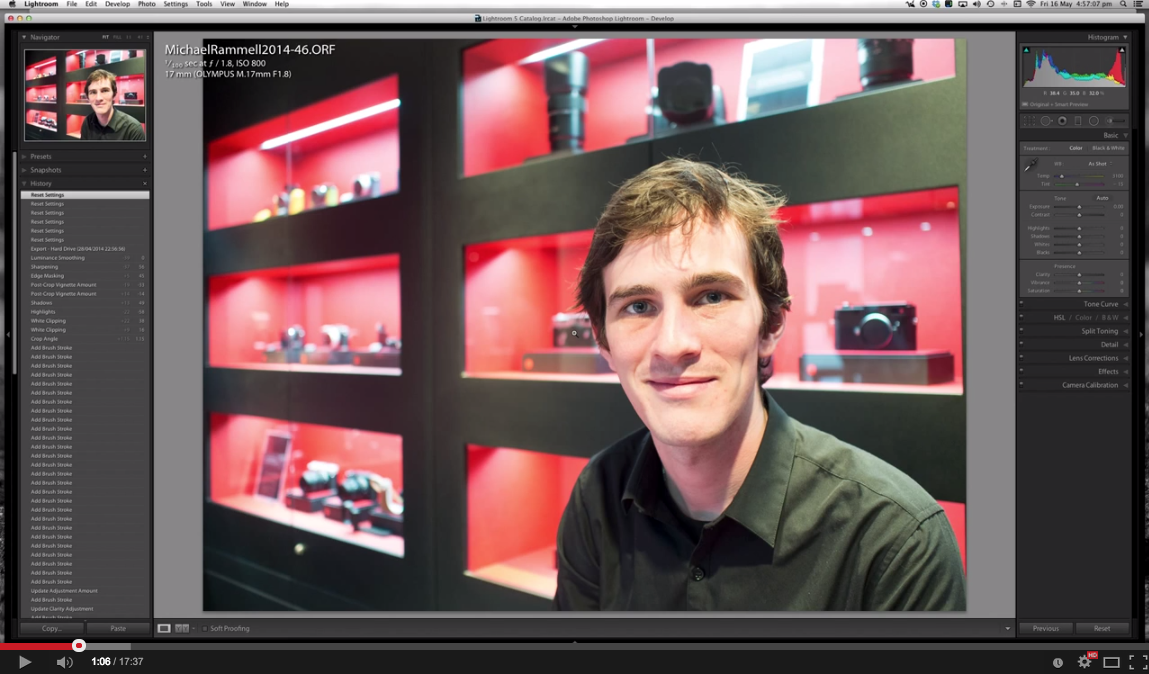

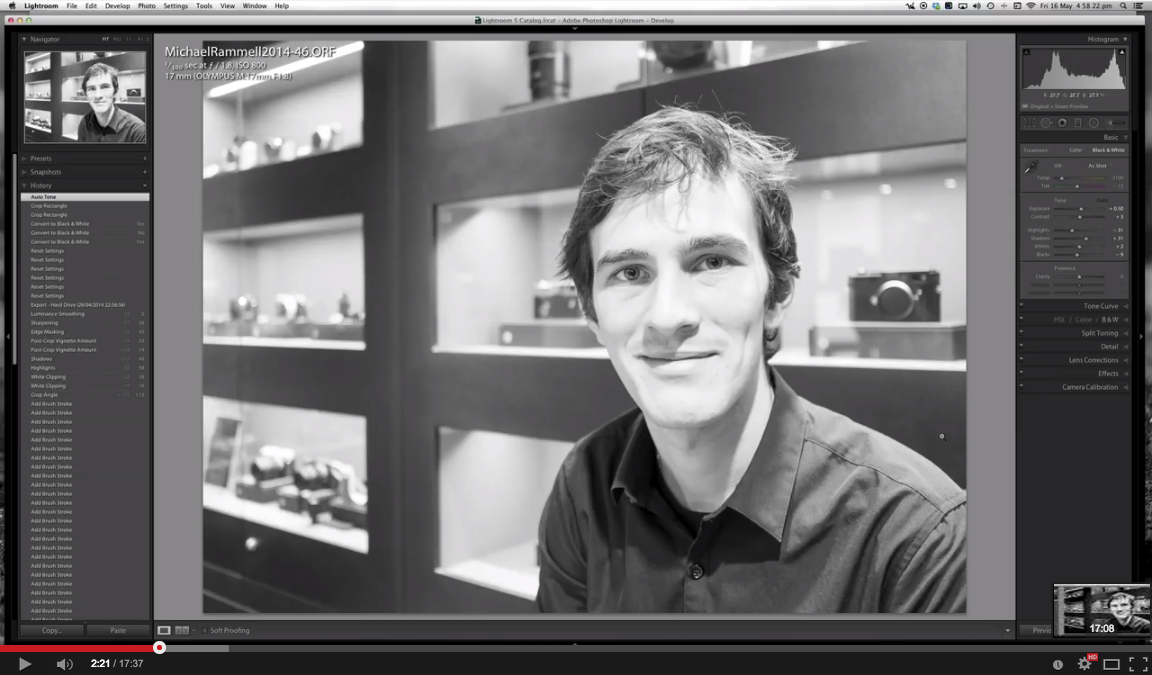
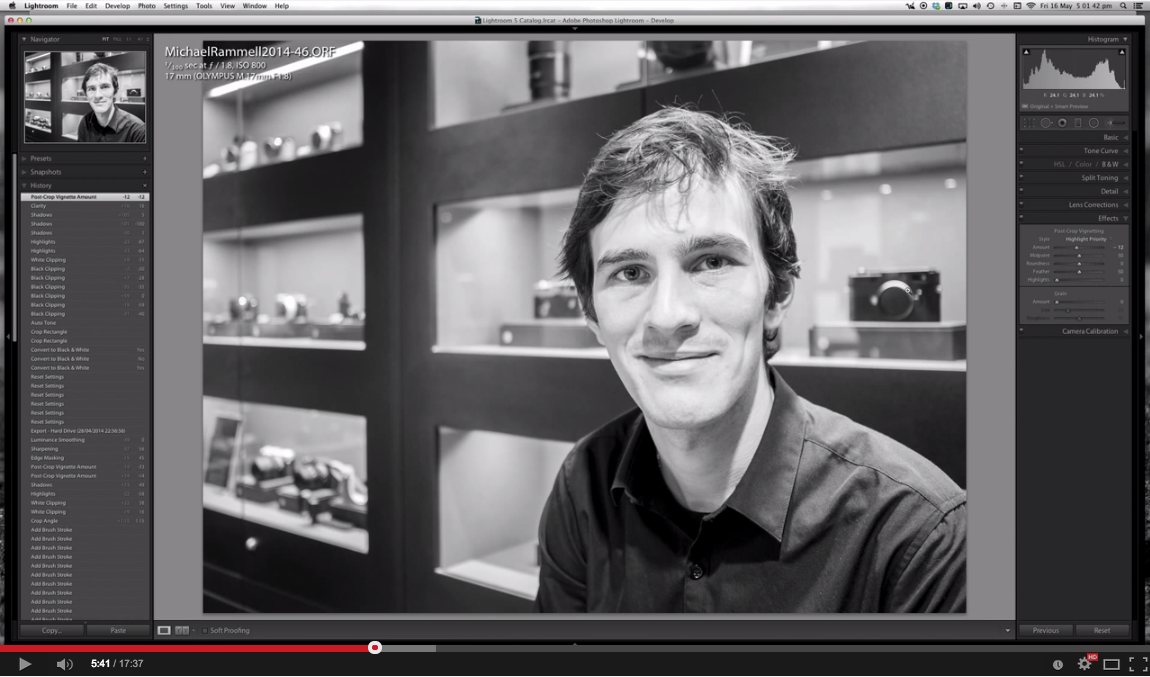
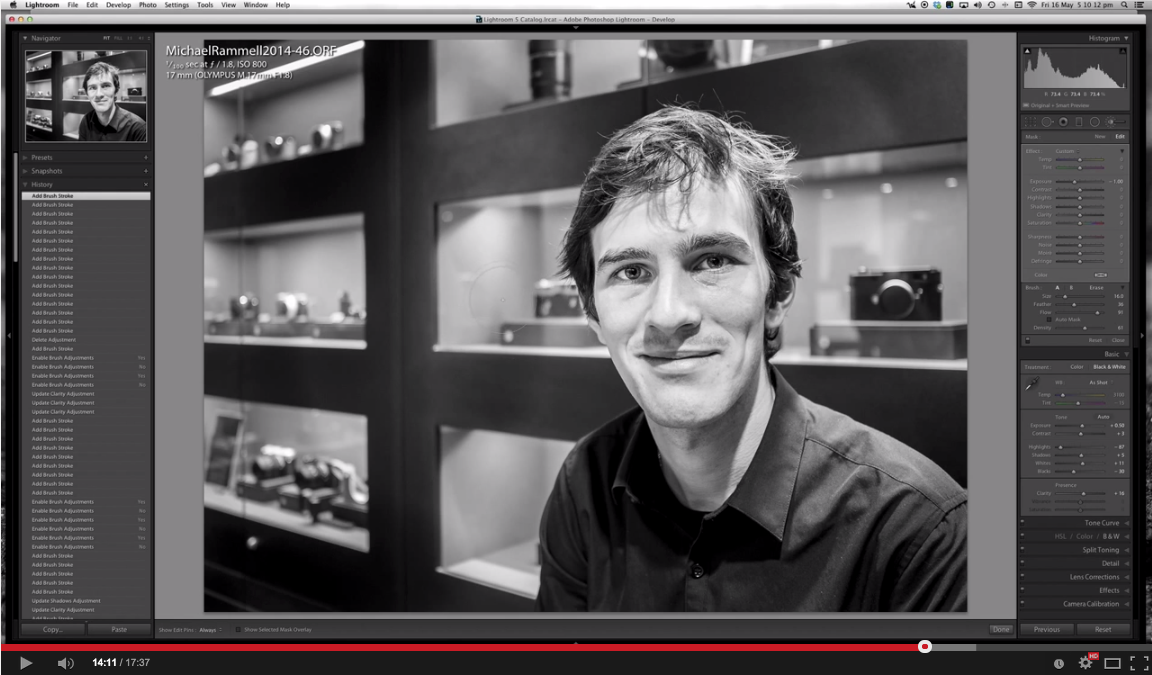
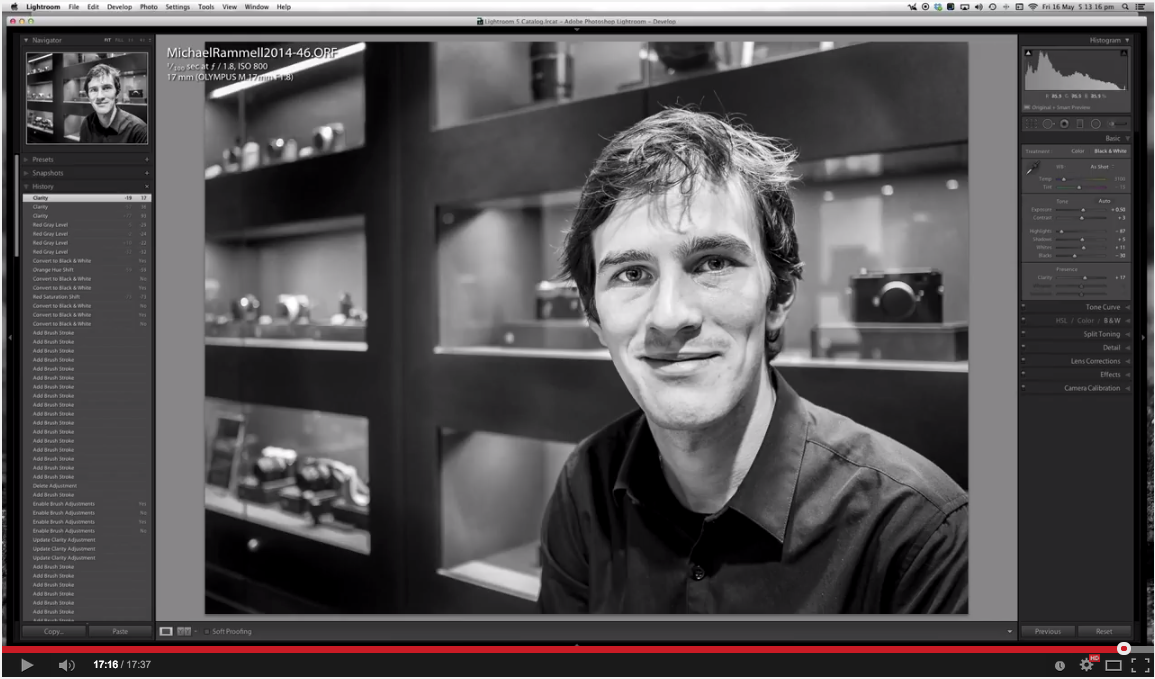
Silver Efex Pro 2
Sometimes, for when you want to just pull 'more' out of a black and white image: Silver Efex Pro 2 should be your go-to software. I find it most effective on subjects that don't include people, such as landscapes and architecture, but in truth, it has the uncanny ability to be able to produce a very pleasing black and white and often reveal textures and shadows you didn't think were present.
I'm not a fan of plugins, presets and actions etc, but Nik Silver Efex Pro 2 is my single exception to this belief because it is so effective. I haven't prepared a video, but I have spoke about Silver Efex Pro 2 before and it's superb qualities. Here, take a look at these side-by-sides, showing my best attempt at a mono conversion, aside a version of the same photograph that has been ran through Silver Efex:

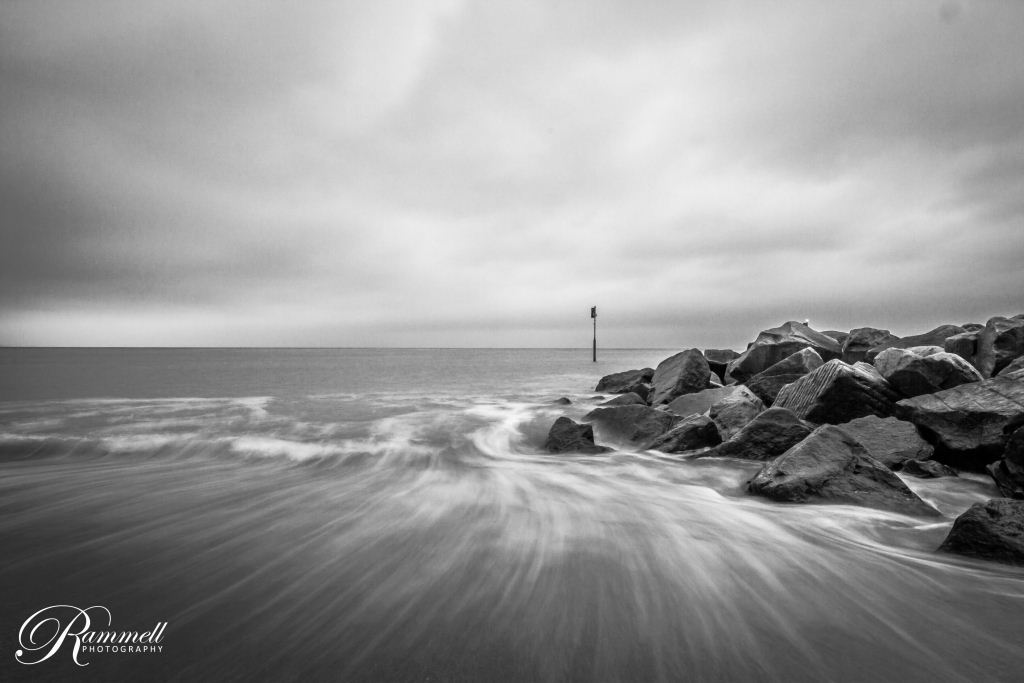
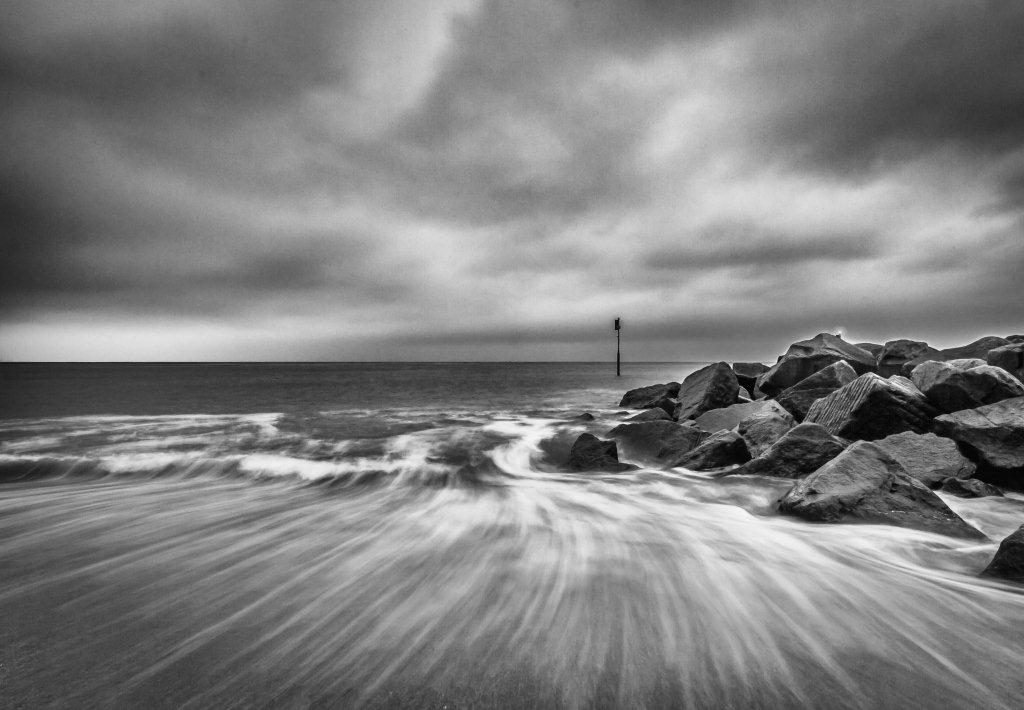


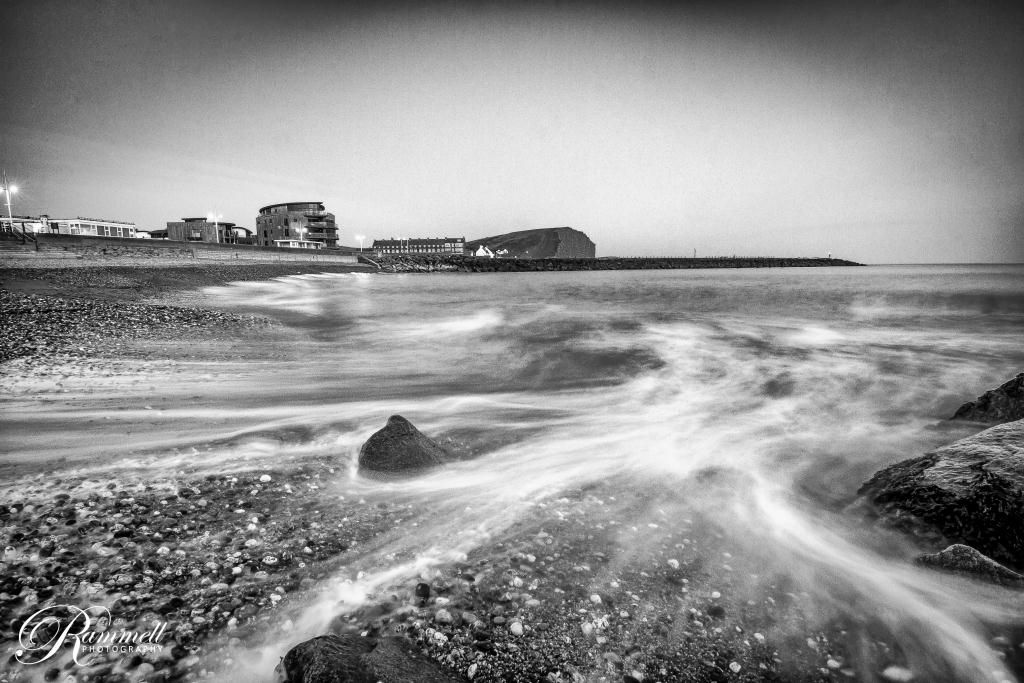
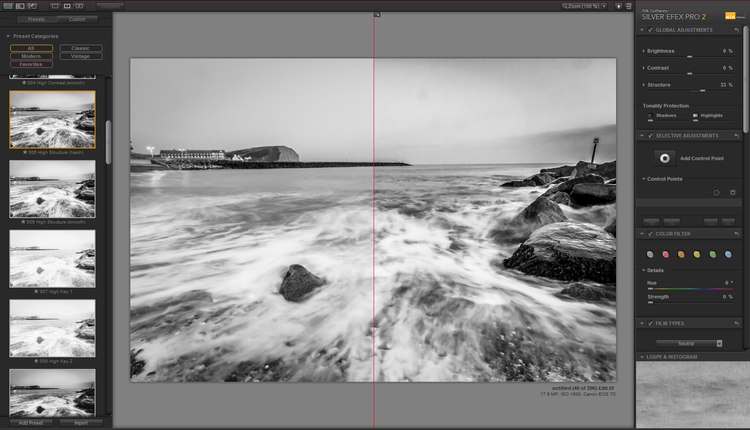
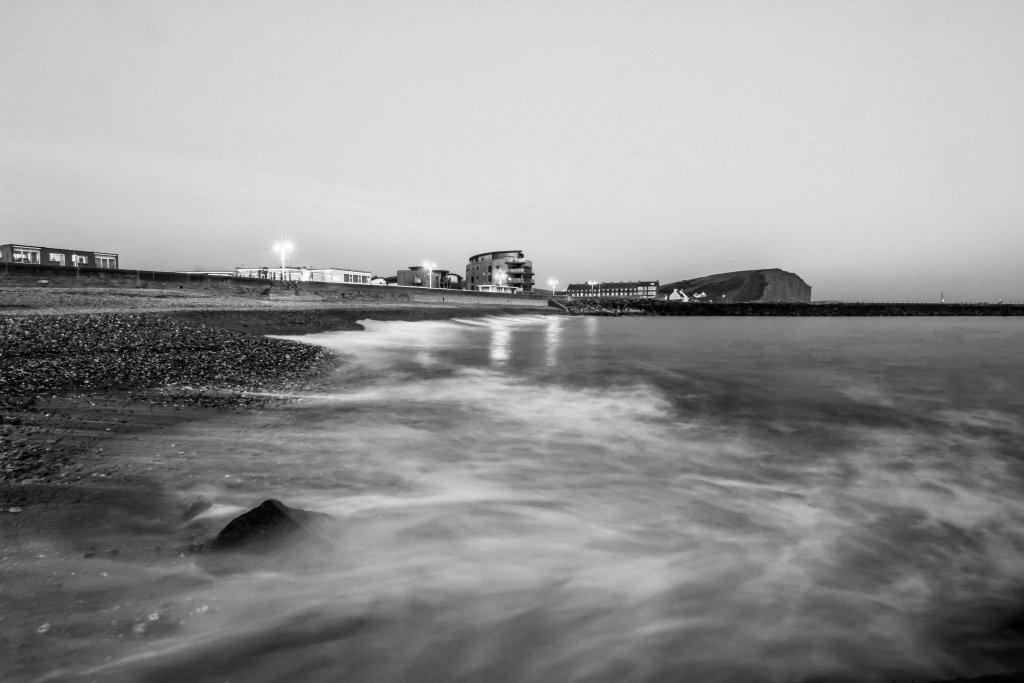
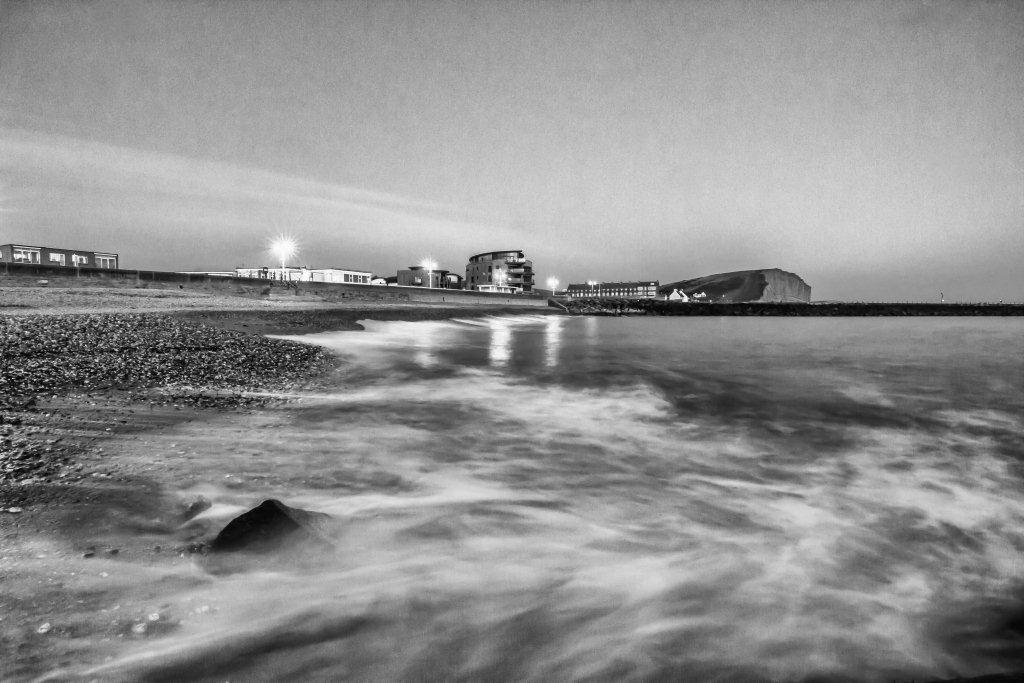
Inspiring Black and White Photographers
To finish this post I thought it only fair that I share with you some of the photographers I adore that are known for their monochrome photography, or, whose black and white work I simply adore. Take a look and let me know what you think.
Alternatively, are there any mostly-mono photographers you admire that you think the world ought to know about? Share them here in the comments and I'll add their names to this list:
Gregory Heisler
Mark Seliger
Fan Ho
Neil Buchan-Grant
Mary Ellen Mark
Why Olympus?
Ever since I announced the sale of all of my Canon DSLR equipment and decided to move to an all-Olympus setup, I've received a lot of questions and even some objections from other photographers too. Today I'm going to answer / tackle some of these Q&A style.
Before we begin...
Firstly: I'm not endorsed or sponsored by Olympus. I just really love their cameras and lenses and believe in what they're doing. Our choice of cameras have to be suitable for our needs and I personally think that the Olympus System suits my needs and shooting style closest. Moreover, I enjoy using the Olympus system more than the Canon DSLR system I used to own. That's not to say you will too.
It used to be Canon vs Nikon, with photographers on each side vehemently defending their chosen brand. Well, in a similar way I stand by Olympus and what it does for me.
Secondly, this post is not a justification of my move to Olympus nor is it a sales pitch to you. Photographers are generally an intelligent group and we're all free to make our own decisions. Furthermore my move to Olympus was made after months of consideration and planning, both practically (will it be able to perform as a professional camera?) and financially (what will this cost me?). I wouldn't want anyone to just up and sell their existing DSLR equipment just because I have done so. Please do make up your own mind by reviewing, loaning, borrowing and trying these cameras out.
I am not writing this post to vindicate my decision. It is simply a statement of my opinions so that in future when I am asked these questions I can simply link to this post to save me having the same discussion over, and over and over...This is a resource and as more questions are asked of me I'll probably answer them here in this post. I hope this can act as a trail of breadcrumbs to those considering a change in their camera system too.
A quick list of facts about Olympus and Micro Four Thirds, in case you didn't know:
Olympus have a range of Mirrorless, Micro Four Thirds sensor cameras called OM-D. This is today's digital version of the original Olympus OM 35mm Film SLR cameras from back in the day. Olympus OM-D's feature EVF's (Electronic Viewfinders) in place of the pentaprism viewfinder you'll see in a DSLR. These cameras do not feature a mirror, hence the term 'Mirrorless' cameras.
Olympus have built their image stabilisation system directly into the body of their cameras, rather than having motors and mechanics inside their lenses. As such all lenses attached to the Olympus OM-D range of cameras are stabilised. They are also dramatically smaller and lighter as a result.
- 'Micro Four Thirds' is actually a standard, formed by camera companies Panasonic and Olympus. Lenses from both of these manufacturers will fit on both bodies (i.e you can use Panasonic-Leica lenses on the Olympus OM-D's and Olympus lenses on Panasonic bodies). Third party companies also make lenses for MFT (Micro Four Thirds) cameras, such as Voigtlander, Samyang, Sigma and more.
- MFT Sensors are smaller than DSLR Crop Sensored Cameras and offer a x2 crop factor, meaning lenses have a 35mm film equivalent field of view of twice the focal range of the lens (for example the Olympus 25mm Lens offers a 50mm field of view. The Olympus 40-150mm offers an 80-300mm field of view). This video from Zack Arias explains it neatly
- The MFT sensors are 16megapixels. As of February 2015, the Olympus OM-D E-M5ii can however shoot a 40 megapixel, high resolution shot by combining 8 frames in-camera.
Youtube is an endless-resource when it comes to Micro Four Thirds cameras, so for now that just about describes neatly what MFT is about. So, let's get into these Q&A's:
Questions and Answers
Question: What was wrong with your Canon Equipment, why did you move at all?
Answer: Nothing was wrong with my Canon equipment as such. I simply enjoyed the Olympus system more. The EVF allows you to see what you're shooting, as you shoot it (imagine an Live-View LCD inside a viewfinder - that's what the EVF is). It took a lot of getting used to, but once I'd used it quite a bit I got to the point where the viewfinder inside my Canon DSLR actually felt odd and rather unintuitive. I've seen photographers before that have said to turn your DSLR previews to black and white to aid in creativeness (allowing you to focus more on subject and light, instead of colour). Well, with an EVF you can change it to black and white so everything you see through the viewfinder is black and white. For someone like me who has something of a love affair with monochrome, this is amazing for. I've recently written an article here on my blog, which will somewhat form the basis of an article that will be featured in the March edition of the Olympus Magazine and in it I refer to how much more fun the Olympus system us to use. To quote myself, I said:
"The part of photography I used to find most exciting and get the most gratification from was the part where I imported all of my photographs onto the big screen of the computer to see what they turned out like (sure they look okay on the back of the camera but you always need to check them on a proper screen). The use of an EVF in a mirrorless though takes that exciting moment of seeing your photographs in Lightroom for the first time and puts it in the electronic viewfinder. Everything you're seeing is exciting as you're shooting it! You can see it all in real-time, in black and white (if you so wish). You don't have to visualise light and shadows, you can see them and you can expose for them through the EVF."
So, I decided to move because I felt that the Olympus camera was more fun and helped me to better-realise my creative vision (I liked my photographs more!)
Some of my Canon Equipment for sale back in February 2015
Question: Why didn't you keep the Canon Equipment and just use both systems?
Answer: I did for a year - I used both systems side by side. Initially the Canon remained my go-to for 90% of my professional work, but the Olympus crept in and Canon's 90% became 50%, then 25% until I didn't use it at all. The last few shoots I did before I put all my Canon equipment up for sale, included a wedding, a christening and an engagement shoot - they were all shot exclusively on the Olympus E-M5. I actually enjoyed the resulting images more, not just because I felt they were sharper, but because the exposure was cleaner, the use of light and shadows was (in my opinion) far, far better than I'd ever achieved with my Canon on a consistent basis. Thanks to the EVF and the way the Olympus RAW files render black and white files, I was simply more satisfied with my work. Both technically and creatively.
So, as my Canon equipment was literally gathering dust, I gave a lot of consideration to selling it. It's value was only going to decrease, particularly as Canon's new range of cameras for 2015 was about to be released, rendering my DSLR's 'old'. I wanted to get as much as I could for them before they depreciated any further. After all it's hard to justify having thousands of pounds of equipment sitting in a bag 'just in case'.
One of the sticking points though was that Olympus didn't have a constant-aperture zoom lens to compare to or replace my Canon 70-200 f/2.8 L IS USM ii, which was a lens I used for around 80% of a wedding day. Without something of that description on the Olympus side, I could never sell up and move over. Then Olympus released the 40-150mm f/2.8 Pro lens: weather sealed, constant aperture and an effective field of view of 80-300mm. It was perfect! I tested it out a couple of times at Olympus events and I was sold. It was every bit as good as a lens at my Canon 70-200mm f/2.8
If you're interested I've written a full preview of the 40-150mm f/2.8 PRO right here
Question: Why Olympus? (Why not Fuji, Sony, Panasonic etc)
Answer: Initially, I tested a Fuji X-E1 and loved it. It was a fantastic camera. The EVF left something to be desired, but the files were silky and had that famous 'Fuji' feel to them. But, the lenses just weren't as small as I thought, meaning as a walkabout camera, it wasn't quite as small as I wanted it to be. The tunnel viewfinder option, whilst a fun novelty, was also something I was never going to use in practise (or ever!), so it had features that were useless to me. The main 'issue' though was that as a shooter of a Canon DSLR, I was used to not only fast auto focus, but I was used to accurate auto focus. In late 2013 when I tested this I felt that the X-E1 was simply too slow and I missed too many shots as it hunted around occasionally. I understand that many of these issues have been remedied by firmware updates and don't get me wrong, it's still a great camera and they produce lovely files, but shortly after that not-so-great experience I received an Olympus E-M5 on loan from Olympus for a month I was even more impressed. The auto focus was blazingly fast and even more accurate than I had ever expected from a camera featuring 'only' contrast auto detect to achieve focus. It also felt quite similar to the Canon thanks to the level of customisation in the menus. The EVF was also much better too!
The other systems I looks at included Panasonic, but only briefly after my month-long loan stint with the Olympus OM-D E-M5 and Sony's A7 range. In short the Panasonic bodies weren't actually that small I didn't think and I preferred the stabilisation system in the Olympus. I was of course drawn by the sole full-frame mirrorless that was the original A7 at the time, but there were a few issues with that setup for me:
- The shutter was too loud. Bad for church photography and street photography
- The lenses were comparatively too expensive
- The lenses were too big!
- The lens range was too limited and not mature enough at the time
- The body itself was bigger than the E-M5
As much as the performance of the E-M5 impressed me at the time, my actual reason for looking for something smaller was because we'd just had our second child and so I wanted something I could drop into the baby changing bag and not worry too much about additional weight and space. The lenses for the Olympus range of cameras are some of the smallest on the market. But don't let that fool you into thinking they're not quality lenses, because they are!
So in summary I had found my desired small camera with great auto focus and tiny interchangeable lenses. It felt right and it worked for me
Handheld 0.6s second exposure
St Paul's Cathedral, London. Shot with the Olympus OM-D E-M5 and Olympus M.Zukio 17mm f/1.8
Question: What Equipment have you Purchased?
Answer: Initially, when I was just dipping my toes in the mirrorless waters so to speak I picked up an OM-D E-M5, a 17mm f/1.8 and a 45mm f/1.8 with the battery grip. But, more recently after my decision to go all-Olympus and sell my Canon equipment, I've been able to purchase the following gear with the money I made, plus an extra investment of a little over £1,000. I feel this selection of gear gives me all I need in terms of focal ranges and lens variety:
- Olympus OM-D E-M1
- Olympus OM-D E-M5
- Olympus 9mm f/8.0 Body Cap Lens
- Olympus M.Zuiko 17mm f/1.8
- Olympus M.Zuiko 25mm f/1.8 (With cap)
- Olympus M.Zuiko 45mm f/1.8
- Olympus M.Zukio 60mm f/2.8 Macro
- Olympus M.Zuiko 12-40mm f/2.8 Pro
- Olympus M.Zuiko 40-150mm f/2.8 Pro
- Olympus 1.4 Teleconverter
- Olympus 600flr Flash
- Olympus ED 12-50 f/3.5-5.6
- Cactus V6 Triggers for cross-system speedlight control
I do also have my eye on the yet-to-be-released 7-14mm f/2.8 pro lens and the all-metal built 75mm f/1.8 as well.
Question: Does the sensor size not bother you?
Answer: I'm bowled over by the performance of these sensors. The files have such a beautiful amount of dynamic range. As I have eluded to before (as has my good friend Neil Graham): These files can really take a beating in Adobe Lightroom. Files can be pushed to the limits of white and black and light and dark and the midtones seem to be able to cope and keep up.
If sensor-size bothered me I clearly wouldn't have made this change from Canon to Olympus, especially as everyone else seemed to lust after a Full Frame DSLR. I was positively moving in the opposite direction with my thinking.
The quality of my work whilst using the Olympus speaks for itself I think, but if you're not convinced of it's ability, you only have to look at the work from great Olympus photographers such as Neil Buchan-Grant and Steve Gosling.
Question: How does it perform in low-light? (is high ISO any good?)
Answer: In short and to keep it simple: it's great up to ISO 5000 and good up to ISO 6400. But there is a bonus feature on the Olympus that gives it the edge over it's competition: the in-body 5 axis image stabilisation system (the same system you'll find in Sony's A7ii. As I mentioned at the top of this post Olympus have implemented their stabilisation in-camera. The sensor itself actually 'float's in suspension and subtly moves in response to your hands' shake and unsteadiness to compensate. This helps to create sharper images.
This system has been attempted before in other cameras (I believe Pentax have tried it) but it didn't take off. Well, with Olympus I can tell you it is a resounding success. I can shoot tac-sharp photographs down at 1/15th of a second, breaking the reciprocal rule numerous times over. As a result of this slower shutter speed it means I can let more light into my cameras and as a result of that we negate the need to increase the ISO to similar levels that other cameras may require you to do so.
An additional point would be that the noise that you see at higher ISO's is actually not unpleasing, especially when compared to the noise that can be found on Canon DSLR's, which can often be golf-ball like. The Olympus grain (or digital noise) is rather filmic and subtle. Further more the colour noise is actually not very harsh either. I typically apply around +20 noise reduction and no more in Adobe lightroom and I find this more effective with Olympus RAW files than I do with Canon's CR2 RAW files. As mentioned, these files seem to really be able to pushed and pulled in photoshop.
Question: What is the In-Body Image Stabilisation like?
Answer: It's the best stabilisation system I've ever felt in a camera or lens. I can shoot down to 1/15th. In the above question with regards to high-ISO i've already spoken about this quite a bit. But I would add that the 5-axis image stabilisation is something you have to experience to truly believe it's effectiveness. Whilst looking through the EVF you'll see the frame moving and shaking around as you hold the camera, but when you half-press the shutter to start focussing it's quite 'magical'! The frame instantly becomes smooth and steady. Incredible. You can adjust the settings of the stabilisation, much like you canon on some of the Canon telephoto lenses, so you can have all 5 axis' going at once to stabilise in all directions, or, you can tell the camera to stabilise horizontally or vertically (for panning etc). This, for me, is the secret weapon that Olympus photographers have. This is why I chose Olympus over other camera systems when looking around.
Statement: You can't get shallow depth of field with a Micro Four Thirds Sensor
Response: Yes, you can. Take a look:









Some of the confusion that comes with depth of field (DOF) / aperture on Micro Four Thirds is the effect the sensor size has on the DOF. As an example, take a the Panasonic Leica 25mm f1.4 lens: with regards to it's light gathering ability that remains an f/1.4 lens - it lets in a lot of light. The confusing part for some is that the effective aperture is doubled. So in the case of the f/1.4 lens is becomes an f/2.8. Further, an f/1.8 would become and f/3.6 and so on. An f/2.8 would become an f/5.6 and f/4 has an effective aperture of f/8.
For many this may be a real issue. Having a lens which has it's lowest apertures f/4, seems to be scary for some photographers. Particularly those coming from the world of DSLR's, where f/1.8, f/2, f/2.8 is common and considered the mark of a quality lens (as opposed to variable aperture lenses that range from f/3.6 - f/5 for example as you zoom) but in all honesty, have a look back through your lightroom library and create a smart collection based on aperture and see what apertures you regularly shoot at. I know for me personally, I regularly shoot at f/4 & f/5.6 and f/8 on a wedding day as a safe aperture to get the entirety of my subject in focus. There are times that f/1.8 isn't appropriate in certain scenarios.
And don't forget, just because the aperture works out to be f/4 doesn't mean it captures the same amount of light as an f/4. They don't. The equivalent aperture number is purely reflective of DOF but directly represents the light capturing ability (i.e an f/1.8 lens is still and f1.8 lens)
That part may confuse some. If it does please do get in touch, I'd happily explain further. But, in short, I don't mind that my f/1.8 lenses work out to have an f/3.6 Depth of field. There is more than one way to skin a cat and achieve a beautiful separation between subject and background, such as longer tele focal lengths
Statement: Mirrorless cameras are don't have very good auto-focus speeds or accuracy
Response: When Mirrorless cameras first started making loud noises and gaining attention it was probably Fuji that was the most prominent and favoured mirrorless brand with their x100. It was certainly one of the first mirrorless cameras (with the exception of Leica) that people claimed to start shooting professional work with. But, unfortunately that camera certainly didn't have the most amazing auto focus. Fuji fans may argue that, and I know that this is no longer the case, but this reputation seems to have spread to the term 'mirrorless' in general. "Mud Sticks" as they say. Well, one of the things that launched Olympus to prominence as a Mirrorless camera maker was the fact that the auto focus was so terrific. The E-M5, combined with any of the lenses I have in my setup doesn't hunt or track at all. Better still is the auto focus of the E-M1, which has both contrast and phase detect auto focus, just like a DSLR.
I would accept that it's perhaps not quite as advanced or accurate as a Canon 1Dx or Nikon D4s, but Olympus' offerings certainly compete up to the level of accuracy and speed of the Canon 5diii and Nikon D810.
I have no video footage or means to prove this, i'll admit, but The Camera Store did a comparison to test this and pitted the E-M1 up against a Fuji and Nikon and it faired very well. You can decide for yourself by having a watch here:
Again, if you want to throw in the 'considering the cost difference' card, you could argue that the E-M1 is a quarter of the price of the D4s. Not bad eh!
Further more, something the mirrorless camera makers, such as Olympus, Panasonic, Fuji and Sony do seem to have in common, is that they launch regular and frequent firmware updates for their cameras that often provide significant improvements to functionality. I would put to any DSLR owner that Canon and Nikon don't do this, but instead choose to release a completely new iteration of the same camera instead (D800 > D810. D600 > D610 for example). The last time I remember any DSLR manufacturer releasing a firmware update of any significant note was Canon, when the released Firmware 2.0 for the Canon 7D, increasing the buffer and fps. But that was some 2.5 years after the cameras release and it has since been superseded by the 7Dii.
Now, that's not to say that Olympus and Fuji aren't also releasing new, physical models of cameras, they are, but not as often as Nikon for sure! Fuji have perhaps done it with their x100 range, starting with the x100, x100s and x100t for example - each a new generation of the previous, but more often you'll see the same camera get a shake-up with a major firmware release and from what I can tell (i can only speak for Olympus here) these firmware updates aren't bug-fixes or patches to fix issues with the previous versions - they are enhancements.
Update April 2015: I've recently taken the E-M1 to Silverstone to photograph some motor racing. Check out the full post here, but for the sake of this post, here are a few sample images:


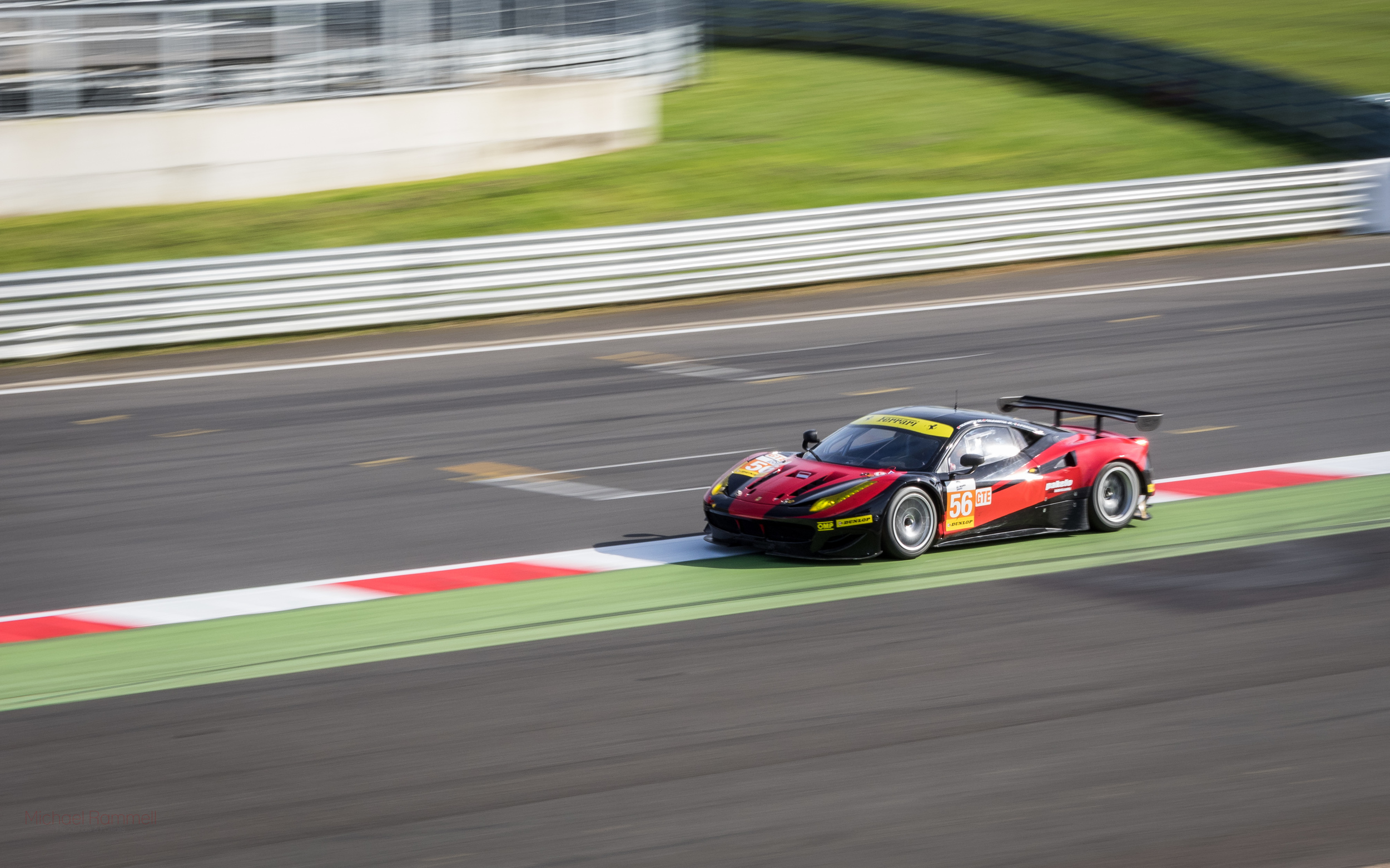
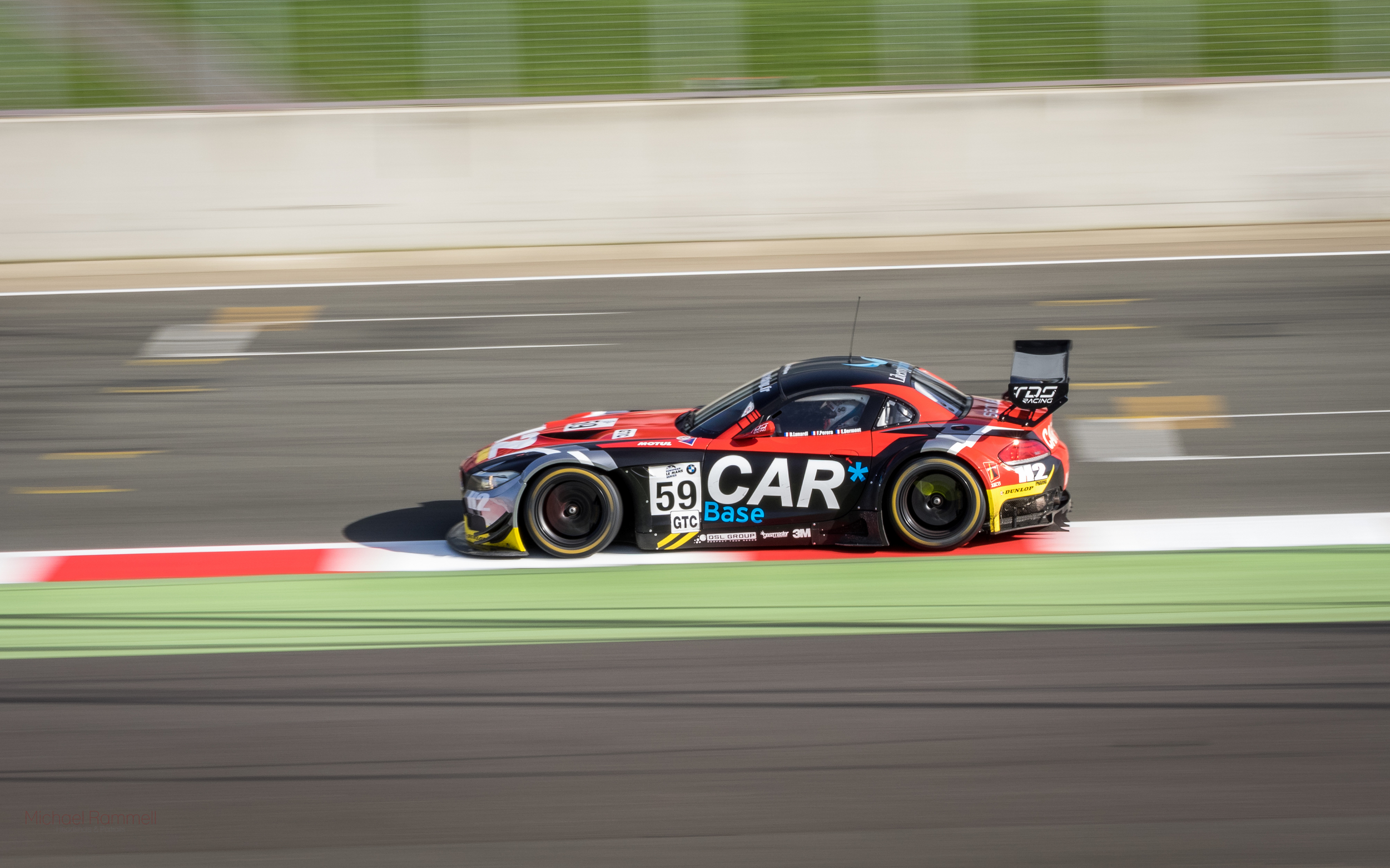


So, when I say I believe in what Olympus are doing - this is something I was referring too.
Statement: Mirrorless systems don't have very good zoom lenses and are only suited to prime lenses
Response: Not true. I would perhaps agree that the Olympus primes are very good and most Olympus photographers will use them, but this is as much to do with the size, weight and sharpness of the lenses as much as it is to do with the quality of them. After all, many photographers moving to mirrorless pick them up for their convenient size, so it makes little sense to buy an adaptor and start mounting a Canon 70-200 to an Olympus or Fuji (which can be done).
As I mentioned Olympus have in the past year released their M.Zuiko 40-150 f/2.8 Pro lens: weather sealed, constant aperture, metal construction and a field of view of 80-300mm. It is a great telephoto lens and that is a fact. Panasonic have a superb (and much smaller) 35-100mm, which of course equates to the more familiar 70-200mm field of view that many DSLR shooters are used to. That is an f/2.8 constant aperture as well, so it's a fast lens too.
Fact is, much like the so-called focussing issues and inability to achieve a shallow depth of field, this is also a myth. Great quality telephoto lenses are available.
Statement: The system isn't mature enough yet, there aren't enough lenses.
Response: Continuing on with the myth-busting answers, this too is also simply not true, especially of Olympus and Panasonic. This statement could well be true for Sony perhaps, but the Micro Four Thirds systems offers us a choice of in excess of 100 lenses. Olympus themselves produce in the region of 30 lenses ranging from wide angles to 600mm, but then you have the Panasonic-Leica lenses and lenses from third party manufacturers too, including some quite exotic lenses such as the Voitglander 42.5 f/0.95 Nokton (85mm). Beautiful lens!
The latest news also is that Olympus are set to also release a series of f/0.95 lenses. This will add more to the already wide variety of lenses and go further to quash the idea of MFT not being able to achieve a shallow DOF.
I don't have much more to much to say about this, except that given that the MFT standard is comparatively young compared to Nikon and Canon's crop and full frame systems - the lens variety for MFT is just as mature and just as well rounded.
Statement: The flash system isn't very good yet.
Response: This is perhaps one area where the statement is partially true. The number of flashes and number of high-powered flashes on offer from Olympus perhaps does fall behind that of Canon and Nikon. However, light is light. You would argue that to get the best optical results from a camera and lens that the best pairing would be a camera and lens from the same manufacturer (with some exceptions, of course) but with flash and lighting all you need is the ability to trigger the light source, whatever that light source may be. Hence the reason I have kept my Canon flash.
Many Micro Four Thirds shooters are opting for the Cactus V6 triggers, which transcend camera and speedlight brand and provides TTL pass-through to combinations of cameras and speedlights from multiple manufacturers.
The fact is, using a Cactus trigger somewhat makes this point irrelevant. If you think that Canon's EX speedlights are the best, or that Nikon's SB speedlights are unbeatable - then that's great, because we can use them too (and not just in Manual mode)
Question: I've heard battery life isn't very good?
Response: Somewhat True. The battery life of my Olympus E-M5 and E-M1 is certainly not as long as the battery life of my Canon DSLR. I could shoot 1000 frames on one Canon DSLR batter and with a grip I'd have 2 in the camera. I would be able to shoot a wedding on a Friday, photograph my childrnen's birthday party on the Saturday and probably only need to change the battery part-way through Sunday when I would be photographing Deer at Richmond or shooting Street Photography. DSLR batteries do have stamina.
I would say that I am getting 500 exposures from my Olympus batteries. They're rated at 400, but one of the things I have come to realise is that the EVF, whilst it does of course use battery, also means I don't ever need to 'chimp' because I have seen exactly what I have just photographed. I have my LCD turned off at all times (not because it's necassary, but because of preference. to have it come on I'll need to press the play button to preview the photograph I just made, or press the menu button to go into the menu. Otherwise, all settings can be seen and changed through the EVF whilst the camera is up to my eye by using dedicated buttons. The more you shoot with your camera the more efficient you become.
I use a battery grip on both my E-M5 and E-M1, so I'm typically good for around 1000 shots on each. I only use genuine Olympus batteries. Which, I may add are much smaller and much lighter, which probably goes someway to explaining the reduced stamina (as well as the EVF of course)
Question: How well built are the cameras and lenses.
Answer: The E-M5 is a superbly built camera and is splash and dust proof, much like a mid-range DSLR. The E-M1 however is fantastically sealed (and it is said that the E-M5ii is sealed to the same extent as well). So, in short these cameras are ready for the elements. Check out these videos on YouTube showing how hardy the E-M1 is (Waterproof test from Blunty and Freeze / Cold Weather resistance). The cameras feel solid and the first time you pick one of these up you will no doubt be very pleasantly surprised by how premium the build quality feels. I have spoken about the E-M5's build quality in more detail in my E-M5 review. Check that out here. If you're wondering about the E-M1, it's a step up from the E-M5, so it too is excellent.
The lenses are also superbly built. Olympus have 3 tiers of lenses, with the basic set of lenses being variable aperture, mostly plastic and often extending elements when zoomed. Effectively the non-pro lenses. Many reviews though will tell you that these lenses are still incredibly sharp.
Next up is the M.Zuiko premium range. This is where you'll find many of the prime lenses, including the 17mm, 25mm, 60mm Macro and the 75mm. These all have a very premium and solid build. The 17mm and the 75 mm in particular feature an all-metal construction. They're very, very nice lenses indeed. [Update/Correction: The 60mm Macro is splash proof, but the other lenses in this range are not. I can however say that I have used the 17mm and the 25mm in the pouring rain and they've been absolutely fine]
At the top of the pile are the Olympus Pro line of lenses, some of which are still in development (including a 300mm prime). These lenses are pretty much built to match the E-M1 in terms of build quality and levels of weather resistance and materials used. The 12-40mm and the 40-150 that I have feel every bit as premium as my old Canon 70-200L f/2.8 IS USM II. They really do. The 1.4 teleconverter is all metal as well.
All mounts on the lenses are metal.
Question: You say you're using your Olympus cameras professionally. Aren't you concerned what your clients may think, or are you worried a wedding guest may have a better camera than you?
Answer: No, I'm not concerned at all what my clients think. My clients book me for my images and book me because of my personality and likeability. I certainly wouldn't expect a higher booking rate just because I shoot with a Canon 1Dx and only the most expensive lenses, so why would I expect fewer bookings because of my Olympus? My photographs are the handshake - my clients see these and want to get in touch. I am my voice and I seal the deal.
The E-M1, with it's grip, looks very professional and serious (and it is!). If you're conscious that size matters then that's fine, that's something you'll have to deal with, but for me I'm more than happy that I can produce professional work with my Olympus cameras. If there were any doubt in my clients mind that my equipment was not up to the task, then I just show my portfolio.
Conclusion
So, for now that answers most of the debated topics I've seen or been dragged into. I very much hope that this post will demystify many misconceptions about Mirrorless cameras, and Micro Four Thirds in particular.
There was a time when Full Frame photographers would laugh at Crop Sensors and they were deemed no up to the task. They very seem to be accepted now and the MFT format seems to be something many people judge and condemn before they even use it, just because the sensor is slightly smaller.
Share and Subscribe
Please do share this post with your friends and those photographers you always battle with (you know the one's!) and in forums where this is often debated. A share link is below. Also, be sure to subscribe to receive much more content like this direct to your inbox!
test an Olympus camera for yourself
Well, I would urge you to try before you pass judgement. If you're still not convinced then that's fine, as I have said each photographer will be suited to a different system. But, if you're keen to try a lens or a body for a few days, or to attend an Olympus event to find out more about this technology, you can use the 'Test & Wow' system to loan equipment for free from authorised Olympus retailers, or you can get yourself along to an Olympus event via the Olympus Image Space. Many of the events are free and most of them will feature an Olympus Ambassador or an Olympus rep, so you can have all of your questions answered. Some of the events also provide free Tea and Coffee. If you're really lucky, they break out the biscuits too! :)
Need to know more or want a question answered?
If you have any questions just post a comment below or get in touch with me via email. I'll happily answer any questions I can.
Thanks for reading! Keep on shooting.
iPhoneography - Editing with Snapseed
I'm often asked how I get my iPhone photographs to look the way they do. It's a compliment for me and I love to share how I achieve my results. So today here on the blog I'm going to share which apps I use, how I shoot with the iPhone and also, I've put together a video showing you what I do within my chosen iPhone photo editing software: Snapseed.
Richmond Park, London UK.
iPhone 6Plus
I've used the iPhone since the 3Gs, then moved to the 4s, the 5s and now the 6Plus. With each model the camera has gained a little something and has gotten better and better (see my iPhone 6 Plus review), but the one thing that remains the same for anyone using the iPhone as a camera is the persons ability to spot a moment and to use the light to get a clean, sharp image as well.
As you can see in the Richmond Park photograph above: I was still up early at Golden Hour, I made the effort to be somewhere where there was the opportunity to make such a photograph with such great light.
The iPhone has a limited set of controls right out of the box, but there are camera apps available to help you make more of the iPhone as a camera and apps to allow you to edit your photographs:
My Apps
Personally, I stick with the out-of-the box standard Apple Camera App that comes with the phone. It's fast to load up, available with a swipe from the bottom of the screen, which is how I often access the camera app) and allows you to control focus points and brightness. It has all the settings I need to enable to me to make a better photograph.
On occasion I may use Camera+ or Camera Awesome, but typically for me it's the standard app.
My Technique
I've got a way of working now that I apply to every scene I shoot:
- Tap on a dark area of the scene to brighten it up (tell the sensor the scene is darker and that it needs to add brightness)
- Get in closer than you think you need to with your feet and by getting closer.
- Pinching to zoom and cropping kill the file's quality. It's not quite like with a RAW file where you have a lot of leverage and scope to recover photographs and heavily crop - the iPhone files do tend so suffer when you start cropping them.
- Take a small burst of images by holding down the button to take pictures. I like to have at least a couple just incase something flies into the scene, or I'm shaking etc.
Editing
I don't use VSCO or film filters. I find them gimmicky. I do upload to Instagram, but I don't apply any of their filters either. I'm not a photography snob or anything like that, it's just that Instagram has millions and millions of people using it and just a limited number of filters - the last thing I want to be doing is choosing from a pre-defined set of filters that the millions of of other users have, making my photograph not stand out among the others.
My choice of App for all my iPhone photograph editing is Google's Snapseed App:
9 out of 10 of my photographs are converted to black and white. If you look at my portfolio here on the website you'll see this is the case with nearly all of my photographs, no matter what camera I'm using. I just love the atmosphere that mono adds to a photograph. But, rather than explain here in writing how I achieve my look time and time again, here's a video to show what settings I apply within Snapseed to make my photographs look the way they do:
The Gallery
This website (and my wedding website too) are built using Squarespace. One of the great features about the galleries is that you can give them an email address and then email photographs, videos and content up into the gallery. For iPhoneography this is ideal as I can now shoot a picture, edit in Snapseed and then from inside the snapseed app I can send that directly into my iPhone gallery. The file never touches my iMac (until it's time to backup my iPhone using iPhoto of course).
So, there you have it. That's how I make all my photographs that you see in my iPhone gallery.
Here is the gallery, in case you wanted to take a look:
Olympus Street Photography with Rob Pugh
Olympus have a great event schedule available for photographers to attend. Many of the events are free and others are available for a small fee, depending on the sort of event. If you're an Olympus photographer, or even if you're not, you can check out the Olympus Image Space website for the calendar of events and get your name on the list if you want to attend an event.
The great thing about these events is that Olympus usually have an Ambassador and an Olympus rep present on the day, so if you're curious about features and functions on your existing Olympus camera, or want to know more about the Olympus range you'll be in safe hands at an Olympus event. And yes - you can usually try out the cameras and lenses too!
Streets Ahead
On Saturday 24th January I attended my second Olympus Image Space event, this time with Rob Pugh in Reading for an event titled 'Streets Ahead'. As you can guess it was Street Photography related.
Myself and another 13 other Olympus Photographers, who were in attendance by invite after applying to go, met up with Rob and Jez from Olympus in Reading at the newly (re-)opened Jessops store before setting off on our route around the Berkshire town of Reading, which is just a few miles away from where I live.
An Education
From the get-go it was easy to see why Rob was selected by Olympus as an Ambassador: Rob not only knows the Olympus cameras inside and out, he was also able to professionally demonstrate and explain his vision, settings and ideas as we walked. From reflections in puddles and the angles on buildings, to the colour filters available within the OM-D's and how they'll affect various scenes in the end result. Furthermore Rob explained these methods and techniques in such a way that all of the participants seem to understand the reasoning behind them. I was very impressed with Rob's aptitude for information sharing and enabling others.
Rob had us all switch our EVF's into Mono mode and then make some adjustments to the level so that we were seeing a nice contrasty rich view through our EVF's. It made the experience of shooting much more fun!
Local Knowledge
Being a local Rob also knew Reading pretty well too. It's a town I visit a couple of times a month with my wife and children, but usually for a spot of shopping or lunch. It was great to see what else Reading had to offer in terms of photographic opportunities. We walked through alleys and pathways I never even knew existed in a town I've been visiting for some 15 years now! As part of the walk we also stopped for at the Handmade Burger Co as well for a bite to eat and a catchup on all things Olympus. For many (myself included) this was a golden opportunity to ask our two hosts about forthcoming Olympus gear and releases. Rob and Jez remained tight-lipped though and refused to confirm or deny anything we were asking or suggesting, of course, but exciting things are coming by the smiles on their faces :)
Gear used on this shoot
I got caught up in conversation with Rob and Jez so much that I guess I was distracted somewhat from the scenes around me. Whereas I'm usually shooting the scenes and goings-on around me, I was more focussed on the conversation and the shapes and structures rather than the people and that reflects in the series of photographs below.
I spent the day with my Olympus OM-D E-M5 and trusty Olympus M.Zuiko 17mm f/1.8. I tried the 25mm f/1.8 for a short while too (thanks Jez) as it was a lens I wanted to buy, but also wanted to play with before hand to see if it was as good as people say it it. I can confirm it's a great lens and as part of my move over to Olympus after selling all my Canon equipment, it was indeed one of the lenses I had in my shopping basket. Both of these primes are sharp and fast to focus! Which is exactly what is needed for Street Photography.
The Photographs
So, here is my small selection of photographs from the day. The EXIF and Camera / Lens details are below each shot. Comments are more than welcome, of course!
Enjoy!
Olympus OM-D E-M5 & Olympus M.Zuiko 17mm f/1.8
ISO: 800 | Aperture: f22 | Shutter Speed: 1/25
Olympus OM-D E-M5 & Olympus M.Zuiko 17mm f/1.8
ISO: 800 | Aperture: f/5.0 | Shutter Speed: 1/640
Olympus OM-D E-M5 & Olympus M.Zuiko 17mm f/1.8
ISO: 800 | Aperture: f/7.1 | Shutter Speed: 1/800
Olympus OM-D E-M5 & Olympus M.Zuiko 17mm f/1.8
ISO: 800 | Aperture: f/7.1 | Shutter Speed: 1/250
Olympus OM-D E-M5 & Olympus M.Zuiko 17mm f/1.8
ISO: 3200 | Aperture: f/2.2 | Shutter Speed: 1/2.2
Olympus OM-D E-M5 & Olympus M.Zuiko 17mm f/1.8
ISO: 250 | Aperture: f/ 1.8 | Shutter Speed: 1/1250
Olympus OM-D E-M5 & Olympus M.Zuiko 17mm f/1.8
ISO: 640| Aperture: f/1.8 | Shutter Speed: 1/200
Olympus OM-D E-M5 & Olympus M.Zuiko 25mm f/1.8
ISO: 100 | Aperture: f/1.8 | Shutter Speed: 1/800






















